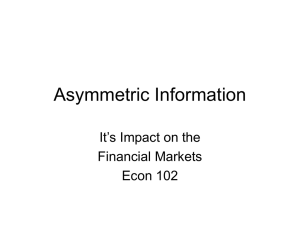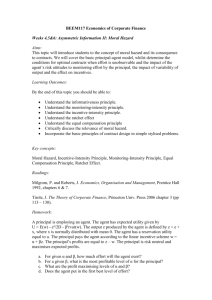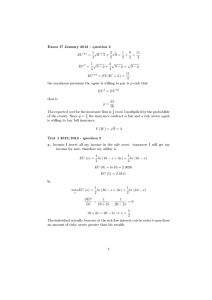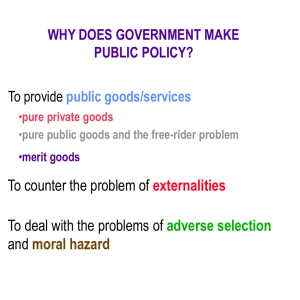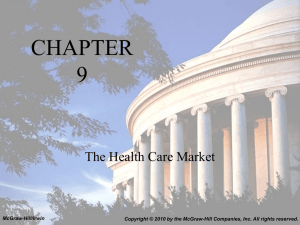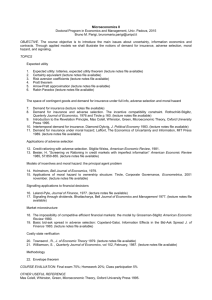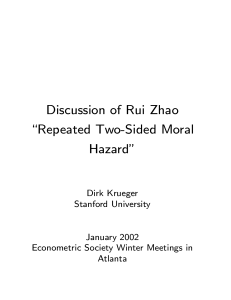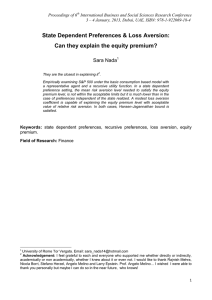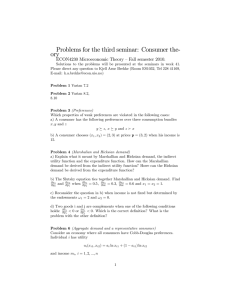LESSON PLAN - HEALTH INSURANCE
advertisement
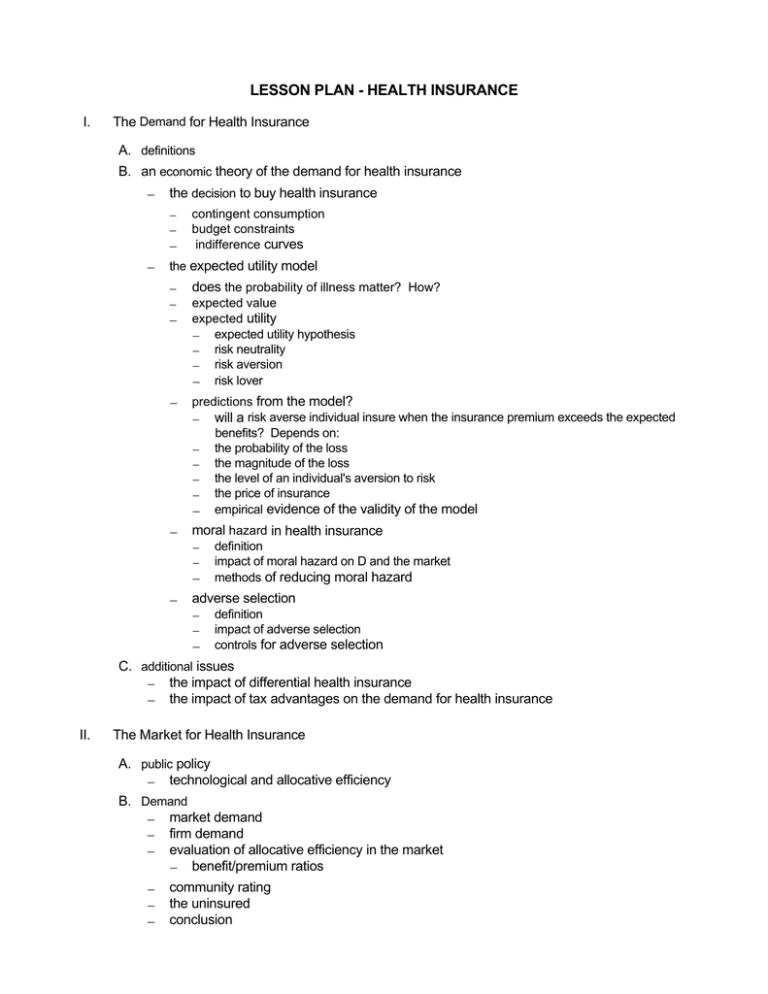
LESSON PLAN - HEALTH INSURANCE I. The Demand for Health Insurance A. definitions B. an economic theory of the demand for health insurance − the decision to buy health insurance − − − − contingent consumption budget constraints indifference curves the expected utility model − − does the probability of illness matter? How? − predictions from the model? − will a risk averse individual insure when the insurance premium exceeds the expected benefits? Depends on: − the probability of the loss − the magnitude of the loss − the level of an individual's aversion to risk − the price of insurance − empirical evidence of the validity of the model − moral hazard in health insurance − − adverse selection − expected value expected utility − expected utility hypothesis − risk neutrality − risk aversion − risk lover − − definition impact of moral hazard on D and the market methods of reducing moral hazard − − definition impact of adverse selection controls for adverse selection − C. additional issues − the impact of differential health insurance − the impact of tax advantages on the demand for health insurance II. The Market for Health Insurance A. public policy − technological and allocative efficiency B. Demand − market demand − firm demand − evaluation of allocative efficiency in the market − benefit/premium ratios − − − community rating the uninsured conclusion C. Supply − economies of scale in the industry? − internal technological efficiency of the firms? − conclusions III. The Evolution of Market Competition in Health Care A. why did competition evolve now? − impetus for competition from − federal initiatives − private sector initiatives − application of anti-trust laws to health care B. the nature of the evolving competition − methods by which competition has increased includes: − increased competition among traditional providers − advertising − increased competition from non-traditional providers − health maintenance organizations − advantages − disadvantages − empirical evidence
